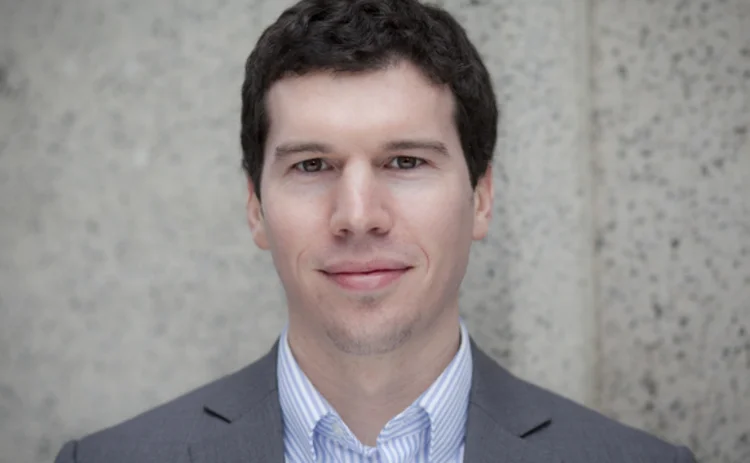What Went Wrong at Knight?

While the Knight Capital algo fiasco has everyone wringing their hands over the dangers of machine trading, there have been few reports of exactly what went wrong with the software that caused days' worth of trades to be made in 45 minutes.
Knight, if it knows, isn't talking specifics. CEO Thomas Joyce called it, "a big bug," which, considering he'd rather have an elephant beetle crawling up his leg than this glitch crawling through his trading system, makes that quite the understatement. Supposedly the problem stemmed from a new piece of software installed on Tuesday morning in preparation for an upcoming New York Stock Exchange (NYSE) order-filling program.
George Michaels, CEO of tax specialist G2 Fintech and a former technologist at Morgan Stanley and Goldman Sachs, says the error likely stemmed from the algorithm failing to register fills and continuing to execute trades after it should have shut off. He likened it to the Disney movie Fantasia, in which Mickey Mouse, as a sorcerer's apprentice, enchants a broom to wash the floor by dumping out buckets of water. Mickey, drifting off to sleep as his menial job is done for him, awakes to find that the broom had no stop function and continued to spill water until the place was flooded.
One vendor official, who has done business with Knight in the past, says that Knight builds its software internally, and that he is wary of the way the market-maker took pride in putting that software together quickly. A haywire algorithm, he says, was inevitable.
Knight did not respond to a request for comment.
Michaels says he agrees that third-party software is less likely to fail. "Internally developed software is meant to solve one problem for one client and never gets the same type of quality assurance (QA) processing that a third party does, because the repercussions are so much stronger," he says. "With internally developed software, what's the upside of doing the QA? It just takes you longer to get the product out the door, whereas in my business, if I blow a release and produce erroneous tax information, I'm out of business. The downside for me is tremendous. The downside for an internal IT staff member is virtually none—they can just get a job at another bank."
Steve Woodyatt, CEO of direct market access (DMA) vendor Object Trading, speculates that the risk controls inputted into the Knight machines are to blame. "Machines only do what the human trading system developer tells it to do—which appears to be, in this case, to cross the spread. The issue is the fact that human direction errantly specified that be done and the proper controls were not in place to stop it.”
Monitoring and risk management procedures need to be examined more carefully, possibly by regulators, to ensure that this won't happen again. The best trading systems have monitoring systems on top of monitoring systems. He advocates sharing pre- and post-trade risk information between the buy and sell side so everyone can clearly read their exposure.
That puts the onus back on risk managers and developers, where it probably should be. Yes, high-frequency trading does increase risk because of the number of deals it cranks out in a few seconds, let alone the 45 minutes that Knight's system was going batty. But it also provides best execution for those who can master it. Proper controls must be programmed in to keep a tight leash on the algo, which itself must be properly and carefully developed. Usually, they are. In this case, they were not.
As Ovum analyst Rik Turner points out, the alternative to electronic trading is open outcry, which at this point would be like going back to horse-drawn carriages. Let's stop wasting breath complaining about the market structure and get down to the business of what went wrong and why. Mickey Mouse was right to enchant the broom. He just did the magic all wrong.
Only users who have a paid subscription or are part of a corporate subscription are able to print or copy content.
To access these options, along with all other subscription benefits, please contact info@waterstechnology.com or view our subscription options here: http://subscriptions.waterstechnology.com/subscribe
You are currently unable to print this content. Please contact info@waterstechnology.com to find out more.
You are currently unable to copy this content. Please contact info@waterstechnology.com to find out more.
Copyright Infopro Digital Limited. All rights reserved.
You may share this content using our article tools. Printing this content is for the sole use of the Authorised User (named subscriber), as outlined in our terms and conditions - https://www.infopro-insight.com/terms-conditions/insight-subscriptions/
If you would like to purchase additional rights please email info@waterstechnology.com
Copyright Infopro Digital Limited. All rights reserved.
You may share this content using our article tools. Copying this content is for the sole use of the Authorised User (named subscriber), as outlined in our terms and conditions - https://www.infopro-insight.com/terms-conditions/insight-subscriptions/
If you would like to purchase additional rights please email info@waterstechnology.com
More on Trading Tech
Systematic tools gain favor in fixed income
Automation is enabling systematic strategies in fixed income that were previously reserved for equities trading. The tech gap between the two may be closing, but differences remain.
Waters Wrap: Examining the changing EMS landscape
After LSEG’s decision to sunset Redi, Anthony examines what might lie ahead for the EMS space.
This Week: Clear Street, AXA/AWS, TD Bank/Google Cloud and more
A summary of the latest financial technology news.
LSEG to sunset Redi EMS in favor of Tora
Sources say competitors will look to seize on the decision to win over Redi’s sizeable US client base.
WatersTechnology latest edition
Check out our latest edition, plus more than 10 years of our best content.
Getting aggressive: Overbond uses AI to assess dealer axes
The fixed-income analytics specialist has developed a new tool to help buy-side firms decide if they’re getting a good price from their dealers.
TS Imagine integrates LTX’s pre-trade analytics tool
Users of the fixed-income EMS will now have access to LTX’s Liquidity Cloud tool, which provides a pre-trade score for the likelihood of trading success.
Most read
- Sell-Side Technology Awards 2024: All the winners
- Deutsche Börse democratizes data with Marketplace offering
- Sell-Side Technology Awards 2024: Best sell-side front-office platform—Bloomberg







